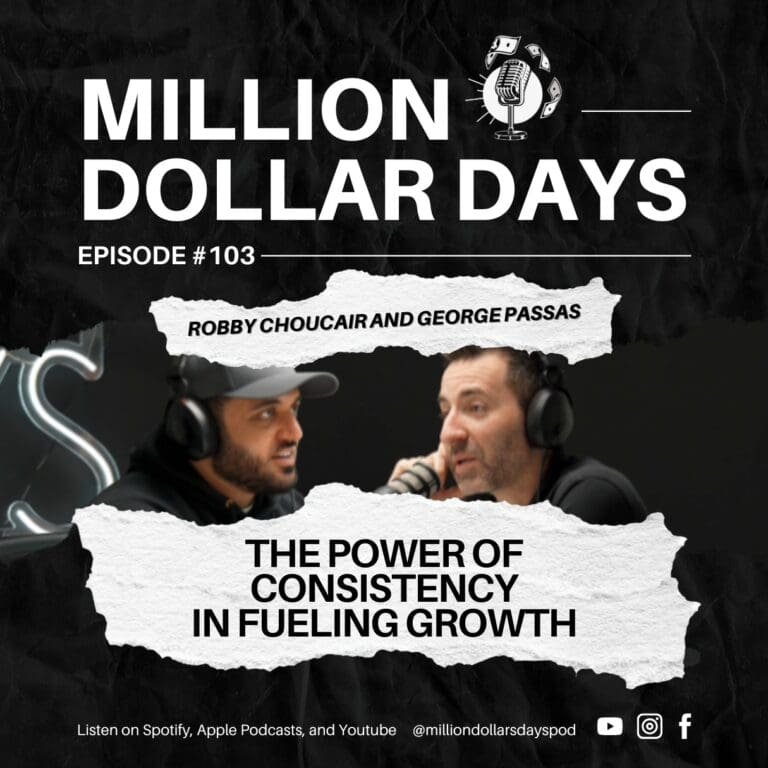Consistency is the quiet engine behind outcomes that look like luck from the outside. The conversation opens with a simple observation: ten years go by fast, and if you’re not intentional about where you’re headed, you arrive somewhere you didn’t pick. The MrBeast time-capsule video is a vivid example—seventeen years old, eight and a half thousand subscribers, one-point-two million views, and a dream that felt huge at the time: one million. Ten years later, multiple channels and hundreds of millions of followers. What actually bridged that gap? Not a single trick or a perfect post time, but a compounding stack of habits: a repeatable cadence, a tight loop between data and creative, and the humility to test, toss, and tune. Most of us overestimate what a single spike can do, and underestimate what persistent effort looks like in a decade. That’s the message that sets the tone: if you want durable outcomes, make peace with being boringly consistent in public for longer than is comfortable.
But consistency without reflection is just stubbornness. The debate turns toward self-awareness: how do you know whether you’re being gritty or just headbutting a wall? The answer sits in measurable markers. Pick the number that defines success, then commit to the specific activities that move only that number. If it’s revenue, sell more. If it’s profit, improve pricing, mix, or efficiency. If it’s subscribers, improve content-market fit and distribution that actually wins subscribers, not just views. The numbers don’t care about your story; they respond to the right inputs. That’s the difference between a craftsman tracking output and a hobbyist tracking feelings. Still, there’s nuance: talent ceilings exist and timing matters. You’re not joining the NBA after seventeen shots this year, but you might meaningfully alter your earning power, brand reach, or health with a focused plan and volume over the next eleven weeks. Ambition needs calibration: choose arenas where you can compound.
This episode sets a public target: grow the YouTube channel from 452 to 1,000 subscribers before Christmas—roughly eleven weeks. That constraint forces clarity. First lever: broaden reach through guests, not as vanity, but as distribution partners. Guests bring new audiences and fresh storylines; they also create shareable assets they’re incentivized to post. Lower the barrier to entry without lowering the bar for value. High-follower guests aren’t the only growth path; high-utility conversations with credible operators can outperform, especially when clips circulate on the right platforms. Volume matters too. Two episodes a week—one anchored, one shorter—creates more surface area for discovery. Quantity is not a substitute for quality, but it increases luck by increasing attempts. When volume rises with thoughtful packaging, serendipity finds you more often.
Packaging and platform strategy become the second lever. Hooks, thumbnails, titles, and first ten seconds of a clip all act as open rates for video. If a clip doesn’t earn attention, nothing else matters. Treat every creative choice as a hypothesis: what promise does the title make, what question does the first line pose, what tension drives retention? Expand the distribution map to fit the audience and message. LinkedIn is a natural channel for business and mindset content and can act as both a discovery engine and credibility layer. Align each platform’s native format: punchy vertical shorts for YouTube and Instagram, text-plus-video on LinkedIn, and curated carousels when the idea needs steps or frameworks. Don’t just post everywhere; tailor the same insight to the surface where it lives.
The third lever is paid reach and sponsorship. Organic is the foundation, but if you have a clear end-point metric, paid distribution can compress time. Secure a sponsor, not for vanity, but to underwrite targeted promotion of best-performing clips and episode trailers. This turns a cost center into a growth loop: sponsor funds paid reach; paid reach feeds subscribers; subscriber growth raises sponsor value. Keep the creative ethical and useful; paid content that performs usually mirrors what already works organically, just with more precise targeting. Treat paid like an accelerant, not a crutch—amplify validated content rather than forcing weak ideas into timelines.
Structure is the fourth lever. Freestyle energy is a strength until it gets in the way of clarity. A light scaffolding improves the experience without killing spontaneity: define segments, timebox the arc, pre-plan the CTA placement, and collect research that makes guests feel considered. Sharpening the axe—doing the work before the work—reduces drag in the recording and creates cleaner chapters, stronger hooks, and more clip-worthy moments. When the team knows exactly where the subscriber ask goes, which quote becomes the short, and which topic ties to a sponsor promise, the episode becomes an asset designed to travel.
